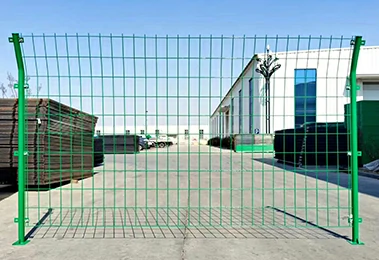Gabion netting is a versatile and cost-effective solution for a wide range of civil engineering projects. It is primarily used for soil reinforcement and erosion control, but its applications extend far beyond these basic functions. Gabions are essentially large cages or baskets made of wire mesh, which can be filled with a variety of materials such as rocks, gravel, or soil.
One of the key advantages of gabion netting is its ability to provide immediate stabilization to slopes and embankments. By filling the cages with loose material, they create a porous barrier that helps to prevent soil erosion and slippage. This makes them an ideal choice for projects where land stability is a critical concern, such as road construction, dam building, and mine reclamation.
Another important feature of gabion netting is its flexibility. Unlike other soil reinforcement methods, gabions can be easily adapted to suit different site conditions. They can be used to create retaining walls, noise barriers, and even temporary flood defenses They can be used to create retaining walls, noise barriers, and even temporary flood defenses

They can be used to create retaining walls, noise barriers, and even temporary flood defenses They can be used to create retaining walls, noise barriers, and even temporary flood defenses
 gabion netting
gabion netting. This adaptability makes them a popular choice for contractors and engineers who need a quick and effective solution to a wide range of problems.
Perhaps the most significant advantage of gabion netting is its low cost. When compared to other soil reinforcement methods, such as concrete or steel reinforced earth, gabions are significantly cheaper to produce and install. This makes them an attractive option for budget-conscious projects, particularly in developing countries where access to advanced construction materials may be limited.
In conclusion, gabion netting is a versatile and cost-effective solution for a wide range of civil engineering projects. Its ability to provide immediate stabilization to slopes and embankments, flexibility in design and application, and low cost make it an attractive option for contractors and engineers around the world. As demand for sustainable and cost-effective construction solutions continues to grow, gabion netting is likely to play an increasingly important role in the future of civil engineering.
 TEL:
+86-13102802206
TEL:
+86-13102802206
 Email:
fencenetting@china.com
Email:
fencenetting@china.com
 Language
Language
 TEL:
+86-13102802206
TEL:
+86-13102802206
 Email:
fencenetting@china.com
Email:
fencenetting@china.com
 Language
Language


 They can be used to create retaining walls, noise barriers, and even temporary flood defenses They can be used to create retaining walls, noise barriers, and even temporary flood defenses
They can be used to create retaining walls, noise barriers, and even temporary flood defenses They can be used to create retaining walls, noise barriers, and even temporary flood defenses gabion netting. This adaptability makes them a popular choice for contractors and engineers who need a quick and effective solution to a wide range of problems.
Perhaps the most significant advantage of gabion netting is its low cost. When compared to other soil reinforcement methods, such as concrete or steel reinforced earth, gabions are significantly cheaper to produce and install. This makes them an attractive option for budget-conscious projects, particularly in developing countries where access to advanced construction materials may be limited.
In conclusion, gabion netting is a versatile and cost-effective solution for a wide range of civil engineering projects. Its ability to provide immediate stabilization to slopes and embankments, flexibility in design and application, and low cost make it an attractive option for contractors and engineers around the world. As demand for sustainable and cost-effective construction solutions continues to grow, gabion netting is likely to play an increasingly important role in the future of civil engineering.
gabion netting. This adaptability makes them a popular choice for contractors and engineers who need a quick and effective solution to a wide range of problems.
Perhaps the most significant advantage of gabion netting is its low cost. When compared to other soil reinforcement methods, such as concrete or steel reinforced earth, gabions are significantly cheaper to produce and install. This makes them an attractive option for budget-conscious projects, particularly in developing countries where access to advanced construction materials may be limited.
In conclusion, gabion netting is a versatile and cost-effective solution for a wide range of civil engineering projects. Its ability to provide immediate stabilization to slopes and embankments, flexibility in design and application, and low cost make it an attractive option for contractors and engineers around the world. As demand for sustainable and cost-effective construction solutions continues to grow, gabion netting is likely to play an increasingly important role in the future of civil engineering.